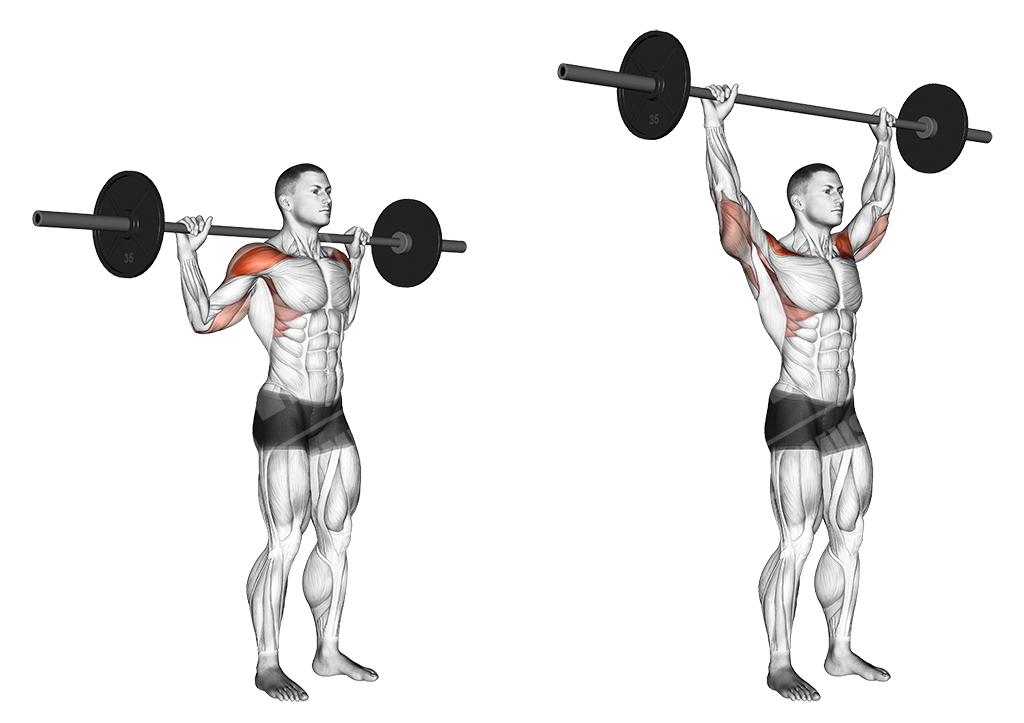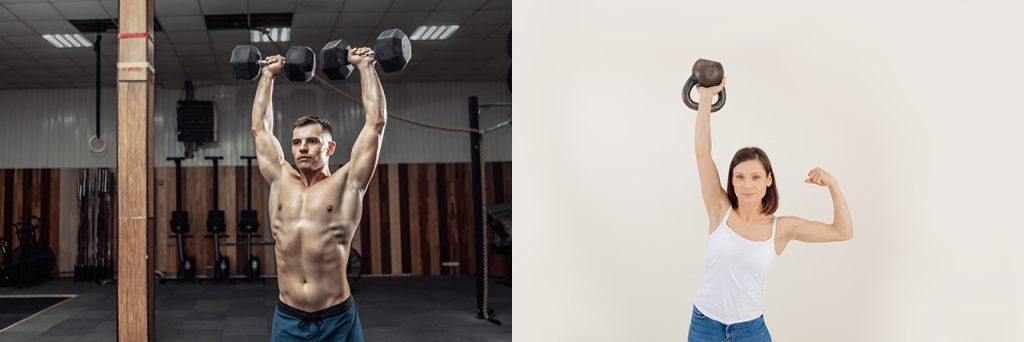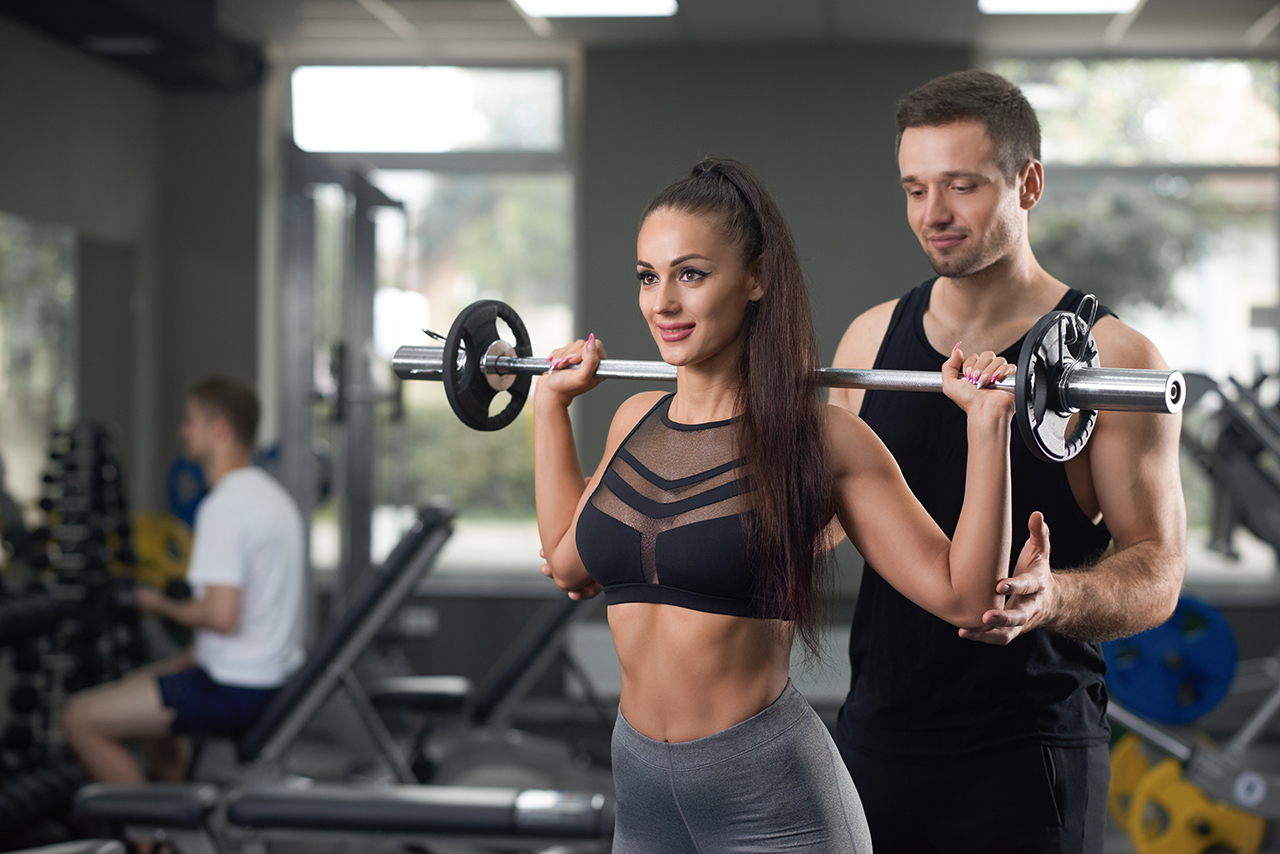There are several exercise routines to condition your upper body muscles, but the overhead press stands out in the list of the best barbell back exercises. This compound exercise involves muscle groups such as the triceps, shoulders, and traps. It involves the use of multiple joints in moving weights making it an efficient exercise in building strength and muscles.
It is imperative that your upper body muscles are well-conditioned especially if you are training for a weightlifting program or recovering from an injury and improving your mobility. Upper body muscles help you perform mundane everyday tasks like reaching for an object on a high shelf. The overhead press (or shoulder press) must be included in your daily exercise routine to help your upper body stay in good shape.
Read this article and use it as your guide on the proper way to execute the overhead press. You will also learn the benefits you will receive from doing this exercise. Tips on how you can avoid common mistakes in performing the overhead press will also be provided.
Benefits of Overhead Press Exercises
Overhead press exercises increase the size and strength of the shoulder, triceps, and trapezius muscles. You can use the barbell for strength build up in your core muscles which includes the lower back, traverse abdominal muscles, spinal stabilizers, and obliques. It also improves your performance on the bench press and other exercises.
A large part of your upper body muscles will be worked out when you perform the overhead press exercises in a standing position. The muscles involved are in the chest (pectorals), shoulders (deltoids), arms (triceps), and upper back (trapezius).
To stay in an upright position, you will need to keep your balance. This requires using your core muscles that include the lower back and abdominals. In a standing position, you counteract every shift in your balance while performing the exercises and your spine is stabilized to make sure that your body has the appropriate base for any loaded movement over your head. Your lower body assists your upper body when carrying a barbell over your head.
On the other hand, if you do the Overhead press exercises sitting down with your back leaning on padded support, the triceps and shoulders will do the work while the core muscles are deactivated.
The Proper Ways To do the Overhead Press Exercises
Before you perform any exercises that will require you to use weights, you must know the pattern and function of each movement. The overhead press is a simple movement where resistance is built by pushing a barbell over your head.
This is done in various ways such as moving both hands together, using just one hand, holding a free weight in every hand, or lifting a single barbell with two hands. You must know the proper exercise procedures in performing the overhead press to avoid any injuries.
Check for Your Shoulder Flexibility
Before you perform any exercises, you must take a shoulder mobility test to ensure that you can exercise safely and know the limits of your range of movement.
First, stand still and slowly lift both of your arms until they are over your head. If you are having difficulty aligning your arms with your ears, then avoid performing exercises that require lifting dumbbells, kettlebells, and barbells over your head. If you can align your arms with your ears, then you can proceed with the following exercises for the overhead press.
Grip the Barbell and then Hold
The standing barbell press is a great upper body workout. The right way to do it is to approach the bar and then grab it with both hands. The hands must be facing outward and positioned apart with a space between them slightly wider than your shoulders.
Barbell Overhead Press


Execution
- Grip the barbell and take it off the rack. Take a step back. Have a good hold of the bar and align it with your collarbone
- Begin the movement by bracing your abs and compressing your butt to engage the gluteus muscle. Lean the head back then push the barbell upwards
- The moment the barbell is over your forehead, put your head back to its normal position while stretching your arms overhead. Do not bend your lower back while your glutes and abs are still engaged. Continue to hold the barbell at the peak of the press
- Tilt your head back as you slowly drop the barbell down to shoulder level
Keep Your Elbows Aligned to Your Wrists
For the best force production, angle your elbows right under the wrists or somewhat inward. You lose force if the elbows are flaring out on your sides.
Utilize Your Glutes and Abs
During the entire exercise keep your abs and glutes engaged. This is where you get your base for support when you press. Once you lose your steadiness this will cause the bar to shake. This will also decrease the weight that you are capable to push.
Avoid These Mistakes When Performing the Barbell Overhead Press
To reap the full benefits of exercising with the overhead press, you must use the right form and avoid injuries. The right form differs for each person depending on their bone formation and body type. Below are 5 of the most common errors made when executing the overhead press.
- Using the wrong stance or positioning of the feet
- Having the wrong arm and shoulder formation
- Pressing your weights in the wrong direction
- The back and neck are not aligned
- Lifting weights beyond your capacity
Here is How to Correct these Mistakes:
- When making your stance, you must stand with feet apart with a distance not less than the width of your hips. This will help your body remain stable by anchoring your body on the ground firmly and keeping your upper body aligned with your hips and glutes. If the feet are not in a firm tripod stance it will prevent the entire body from being steady. It will cause other body parts to overcompensate, and the imbalance could lead to injuries.
- To achieve your maximum scale of motion when lifting weights, your elbows must be pointing forward and locked at the peak of the press. Do not flare your elbows. Your triceps must align with your elbows and wrists. The elbows and wrists support the path and weight of the barbell. If these are not aligned, it is hard to gain the proper momentum in lifting the weight comfortably and correctly. Misalignment might lead to a shoulder injury. Do not shrug your shoulders when lifting to avoid injuring your rotator cuff muscles.
- If you lift the barbell the wrong way several errors may happen. You could lose your stability if you lift it too much towards the front or to the back. Leaning forward will work up the anterior deltoid muscles. This will cause you to miss reps and prevents you from lifting heavier loads easily. Your body must form a straight line when viewed from the side if you are lifting correctly. Have your coach check your form by recording the way you lift or by watching you sideways.
- Do not overstretch or arch your back when lifting weights. You should keep your lower back in a normal position with a slight arch on the upper back when you do chest lifts. Squeezing your glutes to prevent arching the back while lifting. You can move your neck while lifting the barbell over your head. So, your spine will not be too curved, you must extend your neck slightly forward once you lift the barbell.
- Do not lift weights beyond your capacity. You can hurt yourself if you cannot lift the barbell because it is too heavy, and you have the wrong stance while attempting it. Check your form and lift weights that you are comfortable carrying.
Safety Tips to Use When Performing the Overhead Press:
- Avoid lifting weights that are too heavy for you and use the right stance to avoid injuries
- If you have any restrictions with the use of your shoulder and wrists, then chose to lift dumbbells instead. It will offer a path of lesser resistance but will let you perform the lifts much easier
- Train your shoulders first to lift lesser weights by using the kettlebells. Lifting the kettlebells in an upside-down position is ideal for introducing your shoulders to overhead pressing and increasing their mobility
- Lift your weight in a spacious, clean, and brightly lit area so you have the right space to do your movements. The ideal space should have a floor made of rubber or covered in carpet. The ceiling should not be less than 12 to 14 feet high
- Check with a healthcare professional or with your doctor if this exercise is right for you. Have a check-up if you are injured or experience symptoms such as headaches, blurry vision, dizziness, dryness, and muscle pain while exercising


An Overview of the Barbell Overhead Press
You need concentration and effort to have the right stance and grip to complete the movements of the overhead press. If done correctly, you are rewarded with increased endurance and mobility. You’ll achieve the healthier body you’ve worked hard for by following the simple steps and safety tips shown above.

